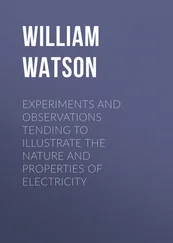Mark Changizi - Harnessed - How Language and Music Mimicked Nature and Transformed Ape to Man
Здесь есть возможность читать онлайн «Mark Changizi - Harnessed - How Language and Music Mimicked Nature and Transformed Ape to Man» весь текст электронной книги совершенно бесплатно (целиком полную версию без сокращений). В некоторых случаях можно слушать аудио, скачать через торрент в формате fb2 и присутствует краткое содержание. Год выпуска: 2011, Издательство: Perseus Books Group, Жанр: Старинная литература, на английском языке. Описание произведения, (предисловие) а так же отзывы посетителей доступны на портале библиотеки ЛибКат.
- Название:Harnessed: How Language and Music Mimicked Nature and Transformed Ape to Man
- Автор:
- Издательство:Perseus Books Group
- Жанр:
- Год:2011
- ISBN:нет данных
- Рейтинг книги:5 / 5. Голосов: 1
-
Избранное:Добавить в избранное
- Отзывы:
-
Ваша оценка:
- 100
- 1
- 2
- 3
- 4
- 5
Harnessed: How Language and Music Mimicked Nature and Transformed Ape to Man: краткое содержание, описание и аннотация
Предлагаем к чтению аннотацию, описание, краткое содержание или предисловие (зависит от того, что написал сам автор книги «Harnessed: How Language and Music Mimicked Nature and Transformed Ape to Man»). Если вы не нашли необходимую информацию о книге — напишите в комментариях, мы постараемся отыскать её.
Harnessed: How Language and Music Mimicked Nature and Transformed Ape to Man — читать онлайн бесплатно полную книгу (весь текст) целиком
Ниже представлен текст книги, разбитый по страницам. Система сохранения места последней прочитанной страницы, позволяет с удобством читать онлайн бесплатно книгу «Harnessed: How Language and Music Mimicked Nature and Transformed Ape to Man», без необходимости каждый раз заново искать на чём Вы остановились. Поставьте закладку, и сможете в любой момент перейти на страницу, на которой закончили чтение.
Интервал:
Закладка:
In particular, those fundamental pillars of humankind are (spoken) language and music. Language is at the heart of what makes us apes so special, and music is one of the principal examples of our uniquely human artistic side.
As you will see, the fact that speech and music sound like other aspects of the natural world is crucial to the story about how we apes got language and music. Speech and music culturally evolved over time to be simulacra of nature. Now that’s a deep, ancient secret, one that has remained hidden despite language and music being right in front of our eyes and ears, and being obsessively studied by generations of scientists. And like any great secret code, it has great power—it is so powerful it turned clever apes into Earth-conquering humans. By mimicking nature, language and music could be effortlessly absorbed by our ancient brains, which did not evolve to process language and music. In this way, culture figured out how to trick nonlinguistic, nonmusical ape brains into becoming master communicators and music connoisseurs.
One consequence of this secret is that the brain of the long-lost, illiterate, and unmusical ancestor we unthaw is no different in its fundamental design from yours or mine. Our thawed ancestor might do just fine here, because our language and music would harness his brain as well. Rather than jumping into a freezer, our long-lost relative might instead choose to enter engineering school and invent the next-generation refrigerator.
The origins of language and music may be attributable, not to brains having evolved language and music instincts, but rather to language and music having culturally evolved brain instincts . Language and music shaped themselves over many thousands of years to be tailored to our brains, and because our brains were cut for nature, language and music mimicked nature . . . and transformed ape to man.
Under the Radar
If language and music mimic nature, why isn’t this obvious to everyone? Why should this have remained a secret? It’s not as if we have no idea what nature is like. We’re not living on the International Space Station, and even those who are on the Space Station weren’t raised up there! We know what nature looks and sounds like, having seen and heard countless examples of it. So, given our abundant experiences of nature, why haven’t we noticed the signature of nature written (I propose) all over language and music?
The answer is that, ironically, our experiences with nature don’t help us consciously comprehend what nature in fact looks and sounds like. What we are aware of is already an assembled interpretation of the actual data our senses and brains process. This is true of you whether you are a couch potato extraordinaire or a grizzled expedition guide just returned from Madagascar and leaving in the morning for Tasmania.
For example, I am currently in a coffee shop—a setting you’ll hear about again and again—and when I look up from the piece of paper I’m writing on, I see people, tables, mugs, and chairs. That is, I am consciously aware of seeing these objects . But my brain sees much more than just the objects. My early visual system (involved in the first array of visual computations performed on the visual input from the retina) sees the individual contours, and does not see the combinations of contours. My intermediate-level visual areas see simple combinations of several contours—for instance, object corners such as “L” or “Y” junctions—but don’t see the contours, and don’t see the objects. It is my highest-level visual areas that see the objects themselves, and I am conscious of my perception of these objects. My conscious self is, however, rarely aware of the lower hierarchical levels of visual structure.
For example, do you recall the figure at the start of the chapter—the person’s head with a lock and key on it? Notice that you recall it in terms referring to the objects —in fact, I just referred to the image using the terms person, head, lock , and key . If, instead, I were to ask you if you recall seeing the figure that had a half dozen “T” junctions and several “L” junctions, you would likely not know what I was talking about. And if I were to ask you if you recall the figure that had about 40 contours, and I then went on and described the geometry of each contour individually, you would likely avoid me at cocktail parties.
Not only do you (your conscious self) not see the lower-level visual structures in the image, you probably won’t find it easy to talk or think about them. Unless you have studied computational vision (i.e., studied how to build machines that see) or are a vision scientist, you probably haven’t thought about how contours intersect one another in images. “Not only did I not see T or L junctions in the image,” you might respond, “I don’t even know what you’re talking about!” We also have great trouble talking about the orientation and shapes of contours in our view of three-dimensional scenes (something that came to the fore in the theory of illusions I discussed in The Vision Revolution ).
Thus, we may think we know what a chair looks like, but in a more extended sense, we have little idea, especially about all those lower-level features. And although parts of our brain do know what a chair looks like at these lower levels, they’re not given a mouthpiece into our conscious internal speech stream. It is our inability to truly grasp what the lower-level visual features are in images that explains why most of us are hopeless at drawing what we see. Most of us must undergo training to become better at accessing the lower levels, and even some of the great master painters (such as Jan Van Eyck) may have projected images onto their canvases and traced the lower-level structures.
Not only do we not truly know what nature looks like, we also don’t know what it sounds like. When we hear sounds, we hear the meaningful events, not the lower-level auditory constituents out of which they are built. I just heard someone at the next table cutting something with her fork on a ceramic plate. I did not consciously hear the low-level acoustic structure underlying the sound, but my lower-level auditory areas did hear just that.
For both vision and audition, then, we have a hierarchy of distinct neural regions, each a homunculus (“little man”) great at processing nature at its level of detail. If you could go out for drinks with these homunculi, they’d tell you all about what nature is like at lower and middle hierarchical scales. But they’re not much for conversation, and so you are left in the dark, having good conscious access only to the final, highest parts of the hierarchy. You see objects and hear events, but you do not see or hear the constituents out of which they are built.
You may now be starting to see how language and music could mimic nature, yet we could be unaware of it. In particular: what if language and music mimic all the lower- and middle-level structures of nature, and only fail to mimic nature at the highest levels? All our servant homunculi would be happily and efficiently processing stimuli that appear to them to be part of nature. And yet, because the stimuli may have a structure that is not “natural” at the highest hierarchical level, our conscious self will only see the dissimilarity between our cultural artifacts and nature.
Why should we believe what we can’t consciously perceive—that language and music mimic nature at all but the highest hierarchical level? Why not go all the way and make language and music completely like nature?
Let’s not forget that language and music are not merely trying to mimic nature. They have jobs to do: writing is for putting thoughts on the record, speech is for transmitting thoughts to others, and music is perhaps for something like evoking feelings in others. Language and music want to capture as much of the structure of nature as they can so that they have an easy ride into our brains, but they must serve their purpose, and will have to sacrifice nature-mimicry when it is necessary to do so.
Читать дальшеИнтервал:
Закладка:
Похожие книги на «Harnessed: How Language and Music Mimicked Nature and Transformed Ape to Man»
Представляем Вашему вниманию похожие книги на «Harnessed: How Language and Music Mimicked Nature and Transformed Ape to Man» списком для выбора. Мы отобрали схожую по названию и смыслу литературу в надежде предоставить читателям больше вариантов отыскать новые, интересные, ещё непрочитанные произведения.
Обсуждение, отзывы о книге «Harnessed: How Language and Music Mimicked Nature and Transformed Ape to Man» и просто собственные мнения читателей. Оставьте ваши комментарии, напишите, что Вы думаете о произведении, его смысле или главных героях. Укажите что конкретно понравилось, а что нет, и почему Вы так считаете.












